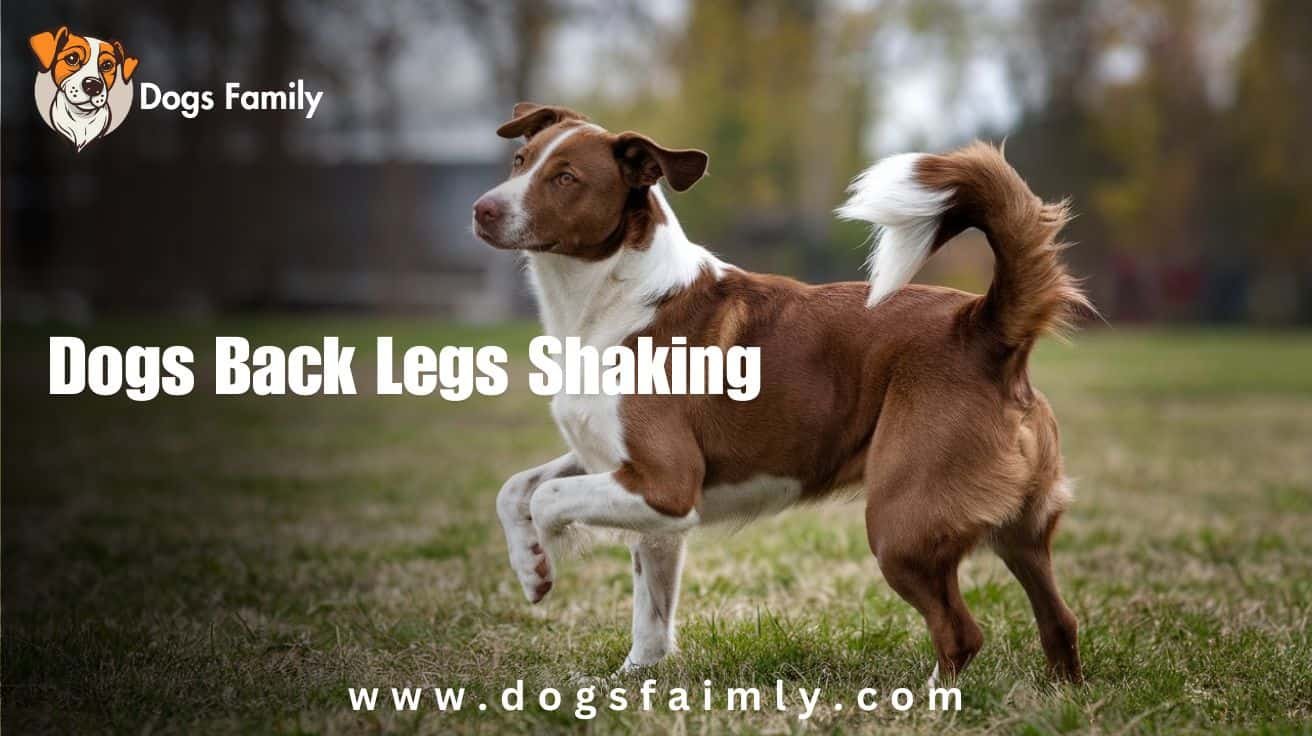Understanding Dogs Back Legs Shaking: Causes and Solutions
If you’re a dog owner, you may have noticed your furry friend’s back legs shaking or trembling at times. This phenomenon can be concerning and may leave you wondering what’s causing it. Is it something serious? Should you take your dog to the vet? In this article, we’ll explore the possible reasons behind dogs back legs shaking, along with practical solutions and when to seek veterinary help.
Why Do Dogs Back Legs Shaking?
Dogs Back Legs Shaking can be caused by a variety of factors. Understanding these causes is essential for determining the appropriate response. Here are some common reasons why your dog’s back legs might shake:
1. Excitement or Anxiety
Dogs often shake their legs when they’re excited or anxious. For example, when you come home after a long day, your dog might shake with joy as they greet you. Similarly, if your dog is in a new environment or around unfamiliar people or animals, they may tremble due to anxiety.
2. Cold Weather
Just like humans, dogs can feel cold. If your dog is shivering, it could simply be a reaction to the chilly weather. Breeds with short hair or small dogs might be more susceptible to the cold, causing their back legs to shake.
3. Pain or Discomfort
If your dogs back legs are shaking, it could indicate pain or discomfort. Conditions such as arthritis, hip dysplasia, or even an injury can cause this trembling. If you notice your dog shaking and displaying other signs of distress, such as limping or reluctance to move, it’s essential to consult your veterinarian.
4. Neurological Issues
In some cases, shaking could be a sign of neurological problems. Conditions like seizures or vestibular disease can lead to shaking in the back legs. While this is less common, it’s important to be aware of these potential issues.
5. Nutritional Deficiencies
Sometimes, dietary issues can lead to muscle weakness or trembling in dogs. For instance, a deficiency in certain vitamins or minerals can impact muscle function, causing shaking. Ensuring your dog has a balanced diet is crucial for their overall health.
6. Genetic Predispositions
Certain breeds are more prone to shaking or trembling than others. For instance, Chihuahuas, Terriers, and Greyhounds are known for their shaky tendencies, often due to their temperament or genetic makeup.
When to Worry: Signs You Shouldn’t Ignore
While some shaking is normal and harmless, other situations require immediate attention. Here are some signs that indicate you should consult your veterinarian:
- Persistent shaking: If your dog’s legs are shaking continuously without relief.
- Accompanying symptoms: Look for other signs such as vomiting, lethargy, or difficulty walking.
- Pain responses: If your dog yelps or seems in pain when you touch their legs or back.
- Seizures: If you suspect your dog is having seizures, it’s critical to seek veterinary care immediately.
Anecdote: A Personal Experience
I remember a time when my dog, Max, suddenly started shaking his back legs while we were at the dog park. My heart raced as I rushed over to him. He was visibly anxious, surrounded by barking dogs. Once I calmed him down and took him to a quieter spot, the shaking subsided. It was a reminder that, while shaking can be concerning, sometimes it’s just a response to excitement or anxiety.
How to Help Your Shaking Dog
If your dog is experiencing shaking, there are several steps you can take to help them feel better.
Step 1: Assess the Situation
First, try to determine the cause of the shaking. Is your dog cold? Are they excited? Are there any signs of pain or distress? Understanding the context can help you decide the best course of action.
Step 2: Provide Comfort
If your dog is shaking due to anxiety, offer comfort and reassurance. Speak softly to them and create a calm environment. A cozy blanket or a warm spot can help if they are cold.
Step 3: Monitor Their Behavior
Keep an eye on your dog’s behavior. If the shaking continues for more than a few minutes or is accompanied by other symptoms, it’s time to consult your veterinarian.
Step 4: Consult Your Vet
If you suspect that your dog is shaking due to pain, discomfort, or any potential health issues, contact your vet. They may recommend tests or treatments based on your dog’s specific situation.
Step 5: Maintain a Balanced Diet
Ensure your dog is getting a balanced diet with the right nutrients. Consult with your vet about the best food options for your dog’s breed and age.
Step 6: Regular Vet Check-ups
Regular check-ups with your veterinarian can help identify any underlying health issues before they become serious. Routine wellness exams are essential for your dog’s long-term health.
Conclusion
Seeing your Dogs Back Legs Shaking can be alarming, but understanding the potential causes can help you address the situation calmly. Whether it’s a reaction to excitement, a response to cold weather, or a sign of pain, being attentive to your dog’s needs is crucial.
If you ever find yourself worried about your dog’s shaking, remember to assess the situation, provide comfort, and consult your veterinarian when necessary. Your furry friend relies on you to ensure they stay healthy and happy!
Hyperlinks:
My Dog is Shaking and Acting weird all of a Sudden
Why is my dog's back legs twitching?
Your dog's back legs may twitch for several reasons, including excitement, anxiety, or cold weather. Twitching can also indicate pain or discomfort due to conditions like arthritis or injury. Additionally, neurological issues or muscle spasms might cause this behavior. If the twitching is persistent, accompanied by other concerning symptoms, or your dog seems distressed, it’s essential to consult your veterinarian. They can provide a proper diagnosis and recommend treatment options to ensure your dog's health and well-being. Monitoring your dog’s behavior will help you understand when it’s time to seek professional help.
When should I be worried about my dog shaking?
You should be worried about your dog shaking if it persists for more than a few minutes or is accompanied by other concerning symptoms, such as vomiting, lethargy, difficulty walking, or yelping in pain when touched. Additionally, if the shaking occurs suddenly or appears to be part of a seizure, it's crucial to seek veterinary assistance immediately. Persistent shaking can indicate underlying issues like pain, anxiety, or neurological disorders. Always consult your veterinarian if you're unsure, as prompt attention can ensure your dog's health and well-being.
Why is my dog suddenly weak in hind legs?
Sudden weakness in your dog’s hind legs can result from various factors, including arthritis, hip dysplasia, or neurological issues like intervertebral disc disease. Injuries, such as ligament tears or muscle strains, can also cause weakness. Additionally, certain medical conditions, like diabetes or degenerative myelopathy, might contribute to this problem. If your dog shows weakness accompanied by other symptoms, such as pain, difficulty walking, or lethargy, it’s crucial to consult your veterinarian. Early diagnosis and treatment can improve your dog’s quality of life and help prevent further complications.
Why is my dog dragging his back legs and shaking?
If your dog is dragging his back legs and shaking, it could indicate several issues. Potential causes include muscle weakness, nerve damage, or injuries affecting mobility. Conditions like intervertebral disc disease or hip dysplasia can lead to dragging and discomfort. Additionally, neurological disorders may result in shaking. If your dog is experiencing these symptoms, it’s crucial to consult a veterinarian for a proper diagnosis and treatment. Early intervention can significantly improve your dog’s quality of life and mobility. Remember, any sudden change in behavior warrants immediate attention to ensure your dog's health and well-being.

